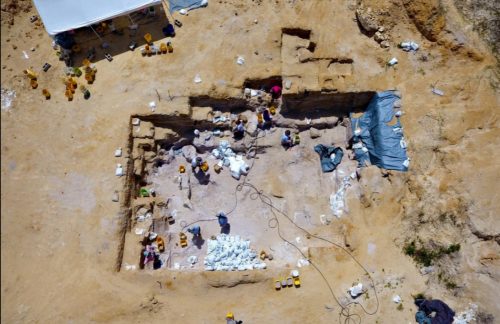Scientific Significance
The Montbrook fossil site is the first late Hemphillian (NALMA) site found in north Florida. It is located about 120 miles (200 km) north of the Palmetto Fauna, the state’s only other source of late Hemphillian fossils. Unlike that region, Montbrook is producing more complete specimens and contains the first significant terrestrial small vertebrate fauna of this age from Florida. The Palmetto Fauna is rich in marine species, while the aquatic species discovered at Montbrook are mostly from freshwater habitats. So, Montbrook is providing the first direct evidence of its age about vertebrate life in a coastal river and adjacent habitats in the Southeastern United States.
- This means we are digging into the unknown – we have already discovered new species and species who had ventured outside of their currently believed geographical ranges.
- For example, the site has already produced the oldest record of a deer in North America, the first and only skull known of the saber-tooth cat, Rhizosmilodon fiteae, and the best lower jaw of a pre-Pleistocene mastodon from North America.

The Effort
An initial excavation took place at Montbrook from November 2015 until May 2016. This effort involved nearly 150 persons and 5,000 person-hours, resulting in the recovery of 8,000 fossil specimens. The digging season following this was even more extensive, running from October 1st, 2016 through May 21st, 2017. The effort made by volunteers, FLMNH staff, students, and teachers resulted in 9,221 person-hours put into the Montbrook site. Preparation and curation of these fossils is currently on going.
What We Need
- Volunteers to help continue the excavation at the fossil site
- The site is on private property and the owner has been extremely generous in allowing us access, but we cannot expect endless extensions to our access; time is of the essence!
- Volunteers to help in the lab and the collection
- Preparing specimens out of plaster jackets (this is a time-consuming, but rewarding task), screen washing to discover micro-vertebrates, rebuilding broken fossils, and cataloging and identifying fossils before placing them into the collection
- Donations
- To provide collecting equipment including plaster, burlap, plaster bandages, various bags and vials, shovels, trowels, picks, brushes, glue, hoses, tarps, etc; plus, transportation.
- To provide storage facilities for the material that is uncurated, including the plaster jackets and matrix bags, and for the material that is curated and needs to be housed in the collection
In order to fund the remaining effort, we must rely on donations. Donations are tax deductible. Any contributions to help fund the effort would be greatly appreciated. To donate by credit card, follow this secure link.
If you are unable to donate money but would like to donate your time, volunteer in the field or the lab.
This project was funded in 2016-2018 by the National Science Foundation under Grant Number EAR 1645530, Jonathan Bloch, Principal Investigator. Any opinions, findings, conclusions, or recommendations expressed in this material are those of the author(s) and do not necessarily reflect the views of the National Science Foundation. Additional funding is provided by the Felburn Foundation and the Florida Program of Vertebrate Paleontology.